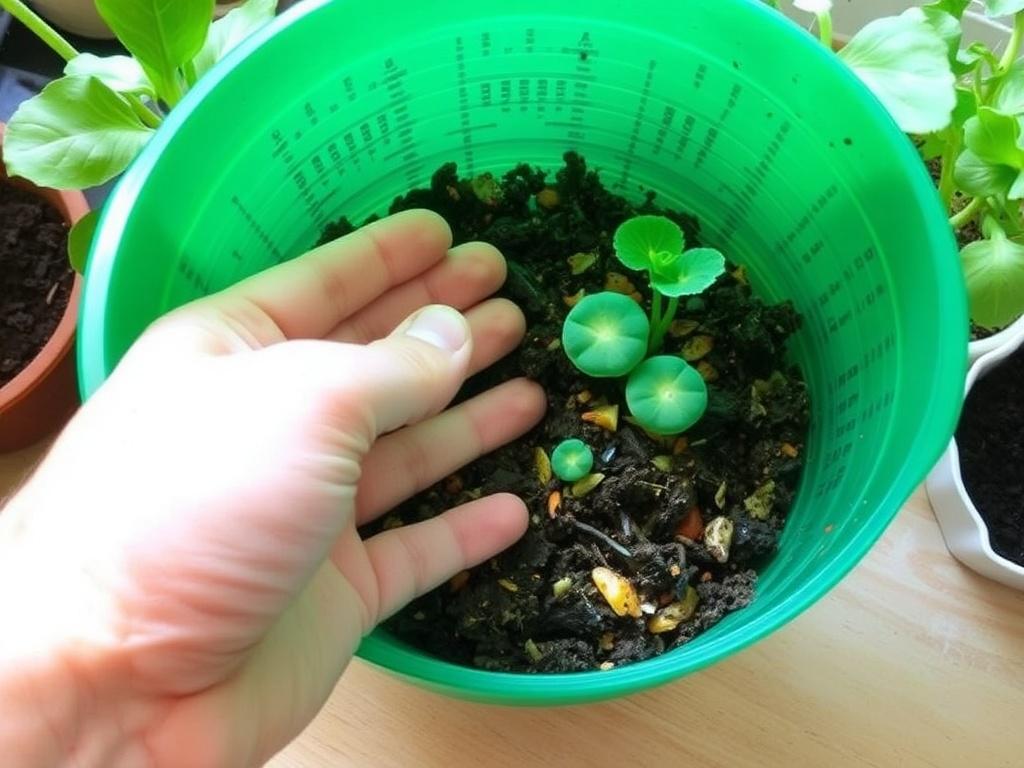If you’ve ever wondered whether it’s possible to turn your kitchen scraps into rich, dark compost without a garden, the answer is a loud yes. Comment faire son propre compost en appartement (lombricomposteur)? — it’s easier than you think, and it’s a satisfying way to reduce waste, feed houseplants, and connect with a tiny, very efficient ecosystem. In this guide I’ll walk you through everything you need to know, from choosing a container and the right worms to daily upkeep, troubleshooting smells, and harvesting beautiful worm castings. Think of this as a friendly, step-by-step companion rather than a dry instruction manual — let’s make vermicomposting in an apartment simple and enjoyable.
Vermicomposting is particularly well suited to apartment living because it’s compact, low-maintenance, and largely odorless when done right. Whether you’re a complete beginner or someone who’s tried composting before but found outdoor bins inconvenient, this article will give you practical, tested advice plus the psychological reassurance that comes from understanding the tiny critters doing the work. We’ll cover cost, space needs, how to handle food scraps responsibly, and how to use the finished compost — everything you’d want to know to say confidently: Comment faire son propre compost en appartement (lombricomposteur) ? Let’s begin.
Why vermicompost in an apartment?
Vermicomposting is a perfect match for apartment living because worms work where you can’t: in small, contained spaces. Unlike traditional hot composting, which can require large volumes and occasional turning, vermicomposting relies on worm digestion to break down organic matter slowly and steadily. That means less space, less effort, and fewer trips to a community garden compost drop-off.
Beyond convenience, there are several big benefits:
- Waste reduction: You’ll divert a significant portion of your kitchen waste from the landfill.
- High-quality fertilizer: Worm castings are nutrient-dense and great for houseplants, balcony pots, and container gardens.
- Low maintenance: Once you set up the system correctly, it mostly runs itself.
- Educational and calming: Watching a thriving mini-ecosystem is both instructive and satisfying.
What is a lombricomposteur (vermicomposter)?
“Lombricomposteur” is the French term for a vermicomposter, and it refers to a container system housing composting worms that convert organic scraps into castings. There are many designs — from simple single bins to stacked tray systems that make harvesting easier. Most apartment vermicomposters are either:
- Plastic or wooden single-box bins.
- Stacked tray (multi-tier) systems where worms migrate upward as food is added.
- Commercial “worm farms” with spigots for liquid fertilizer and aerated bottoms.
Each design has pros and cons. Stacked systems can be tidier for harvesting, while single boxes are inexpensive and customizable. We’ll look at the right choice for your apartment later.
How the process actually works
The worms eat organic matter, microorganisms break it down further, and the result is nutrient-rich castings. Microbes and decomposers (bacteria, fungi) do most of the chemical work, but worms accelerate the process by shredding material and providing a hospitable environment for microbes. The system also generates a liquid by-product often called “worm tea” which, when diluted, can fertilize plants.
Choosing the right worms
Not all worms are equal for apartment vermicomposting. Earthworms found in the garden aren’t ideal — they prefer soil and colder conditions. For indoor composting, these species are the favorites:
- Eisenia fetida (red wiggler)
- Eisenia andrei (similar to red wigglers)
- Perionyx excavatus (Indian blue worm, in some climates)
Red wigglers are the gold standard: hardy, fast-reproducing, and great at breaking down kitchen scraps. You’ll typically want to start with at least 500-1,000 worms (about a pound) for a moderate-sized household. That amount can process the scraps of an average apartment couple.
Picking a bin: what works best in an apartment?
Space, budget, and aesthetic preferences all factor into the right vermicomposter. Here’s a simple comparison to help you choose:
| Bin Type | Pros | Cons | Best For |
|---|---|---|---|
| Simple plastic bin | Cheap, customizable, easy to find | Must provide drainage/ventilation; manual harvesting | DIYers, tight budgets |
| Stacked tray system | Easy harvesting, compact, neat | Higher cost, limited size per tray | Apartment users who want low-maintenance |
| Commercial worm farm | Designed for indoor use, includes tap for liquid feed | Can be expensive; might attract more moisture | Beginners who want a packaged solution |
| DIY wooden box | Customizable and breathable | Requires woodworking and maintenance | People who like rustic aesthetic |
Whichever bin you pick, ensure it has adequate ventilation and a way to drain excess moisture. For apartment use, a compact stacked system placed under a counter, in a closet, or on a balcony typically works well and looks tidy.
Materials you’ll need to start
Getting started doesn’t require much. Here’s a straightforward list:
- Vermicompost bin (stacked trays or a secure plastic/wooden box)
- Red wiggler worms (Eisenia fetida)
- Bedding material — shredded newspaper, corrugated cardboard, coconut coir, or aged compost
- Spray bottle for moisture control
- Kitchen scrap collection container (with a lid)
- Thermometer (optional) and pH test strip (optional)
- Small hand rake or gloved hands for mixing
Setting up the bedding
Bedding is where the worms live and lays the foundation for a healthy system. Aim for a fluffy, damp-but-not-wet environment that resembles a wrung-out sponge.
- Shred newspaper or cardboard into 1–2 cm strips and soak briefly, then squeeze out excess water.
- Alternately, use coconut coir rehydrated to the same texture.
- Fill your bin about one-third full with bedding, leaving room to add scraps.
- Mix a handful of soil or finished compost into the bedding to introduce beneficial microbes and grit.
Step-by-step: how to start your lombricomposteur
Let’s go through a clear step-by-step setup so you can say with confidence: Comment faire son propre compost en appartement (lombricomposteur)?
- Choose a location: a cool, shaded spot in your apartment away from direct heat — under the sink, balcony covered, or a closet shelf. Ideal temperature range is 15–25°C (60–77°F).
- Prepare the bin: drill or ensure ventilation holes (if not present). Place a tray or shallow container underneath to catch any liquid if your bin drains.
- Add bedding: put in damp, fluffy bedding about one-third to half full. Mix in a small handful of garden soil or finished compost.
- Introduce worms: scatter the worms across the bedding; they’ll burrow within minutes. Let the bin rest a day or two before adding a lot of scraps, so worms recover from transport.
- Start feeding: add small amounts of kitchen scraps in one corner or under the bedding. Rotate feeding spots to avoid building up too much food in one area.
- Cover the scraps: always cover fresh food with bedding or a piece of cardboard to prevent flies and odors.
- Monitor moisture and temperature: use a spray bottle when the bedding feels dry. If liquid pools, remove some bedding and let the bin air out.
What to feed — and what not to
One major worry for new vermicomposters is whether their kitchen waste is suitable. Red wigglers are not picky, but some items slow decomposition or attract pests.
- Good foods: fruit and vegetable peelings, coffee grounds and filters, tea bags (remove staples), crushed eggshells, small amounts of bread and grains, shredded paper, and plant trimmings.
- Avoid or limit: meat, dairy, oily foods, bones, citrus in large amounts (a little is fine), onion and garlic in excess, spicy foods, and pet waste.
- Chop scraps small: smaller pieces are easier for worms and microbes to process.
Daily and weekly care
Apartment vermicomposting is low-maintenance, but small, consistent checks keep the system healthy.
- Daily: add scraps to your kitchen caddy and transfer to the bin every few days. Check for obvious problems (smells, flies, excess liquid).
- Weekly: inspect moisture and stir bedding gently to prevent compaction. Adjust feeding if the worms haven’t kept up.
- Monthly: remove roughly any finished compost if using a single-bin, or rotate trays if using a stacked system. Top up bedding as needed.
- As needed: if pests (fruit flies) appear, bury food deeper, add more carbon (paper/cardboard), and ensure the lid is secure.
Common problems and simple fixes
Even well-run systems can have hiccups, especially in small spaces. Here’s a quick troubleshooting table:
| Problem | Likely Cause | Fix |
|---|---|---|
| Foul odor | Too wet or too much food lying on top (anaerobic conditions) | Remove spoiled material, add dry bedding, improve ventilation, and reduce feeding |
| Fruit flies | Exposed food scraps or overripe fruit | Bury food, cover with bedding or cardboard, use closed kitchen caddy |
| Worms crawling out | Stress: too hot, too dry, too acidic, or overcrowded | Check temperature and moisture, add bedding, reduce feeding, ensure pH is neutral |
| Excess liquid (leachate) | Too much moisture or too many wet scraps | Drain liquid, add dry bedding, reduce wet inputs |
Harvesting castings and using them

After a few months the material will start to look dark, crumbly, and earthy — that’s when you know you have castings. There are a few common ways to harvest:
- Side-by-side method: push finished material to one side, add fresh bedding and food to the other side, and wait for worms to migrate.
- Light and heat method: expose the top layer to light; worms will burrow down, allowing you to scoop out castings.
- Stacked tray method: simply remove the bottom tray of finished castings when worms move up to new trays.
How to use the castings:
- Top-dress houseplants: sprinkle a handful on the soil surface and water in.
- Potting mix additive: blend 10–25% castings into new potting mixes.
- Liquid feed: steep a handful of castings in water for 24–48 hours, dilute 10:1, and use as mild fertilizer.
Castings improve water retention, nutrient availability, and soil structure — even a small amount goes a long way for container plants.
Seasonal considerations and temperature control
Although indoors you have more control, you should still pay attention to seasonal changes. Worms prefer moderate temperatures and slow down when it’s cold and become stressed when it’s too hot.
- Winter: keep the bin away from very cold walls and ensure it remains above ~10°C (50°F). Insulate with a blanket if needed.
- Summer: avoid placing the bin near heaters or in direct sun. A fan circulating air in a poorly ventilated space can help.
- Humidity: indoor air can be dry in winter; mist the bedding occasionally. Conversely, if your apartment is humid, check for excess moisture.
Apartment-friendly placement tips
Choosing where to keep your lombricomposteur matters: pick a spot you’ll check, but that won’t be in the way.
- Under the kitchen sink — convenient but ensure ventilation and no chemical cleaners leak in.
- Closet shelf or pantry — ensure some airflow and that it’s not too warm.
- Balcony — perfect if covered and sheltered from direct sun and cold rain.
- Utility cart — makes the system mobile and hides it neatly in a busy apartment.
Costs, time frame, and expectations
Vermicomposting can be very low cost to start, especially if you repurpose containers and bedding. Here’s an approximate startup cost guide and timeline:
| Item | Estimated Cost | Notes |
|---|---|---|
| DIY bin | $0–$30 | Often free if reusing containers |
| Commercial stacked bin | $50–$200 | Depends on brand and size |
| Worms (1 lb) | $30–$60 | Quantity depends on household scraps |
| Bedding materials | $0–$20 | Newspaper is free; coir costs money |
Timeline expectations:
- Initial setup: 1–2 hours.
- Active processing: worms will be active within days; a small bin may produce usable castings in 2–4 months.
- Maintenance: 10–20 minutes a week on average.
Common myths and helpful truths
People often hesitate because of myths about worms or compost in apartments. Let’s bust a few:
- Myth: “It will smell.” Truth: A properly balanced vermicompost system smells earthy — not foul. Odors mean a problem to correct.
- Myth: “Worms will infest my apartment.” Truth: Worms stay in their bedding where conditions are right. They don’t infest homes like pests.
- Myth: “It takes too much time.” Truth: After a few minutes a week for checks and adding scraps, it’s very low effort.
When to expand or downsize
If your bin processes scraps faster than you can provide or starts overflowing, you can:
- Move some worms into a new bin or give them to a friend.
- Start a second small bin for seasonal surges (holidays produce more food scraps).
- Reduce feeding temporarily if you travel or produce less waste.
Ethics and worm care
Treating your worm colony well means keeping them in good conditions: consistent moisture, appropriate temperatures, and balanced food. Don’t overfeed, and try not to introduce chemicals like pesticides into the bin. If vacation time will leave the bin unattended, leave a supply of moistened bedding and a larger chunk of food partially buried — worms can slow activity and survive a couple of weeks without fresh scraps. For longer trips, arrange for someone to check the bin.
Where to get help and supplies
Resources for beginners:
- Local gardening centers or community gardens often sell worms or can advise.
- Online sellers and forums for vermiculture communities.
- Workshops or urban agriculture groups in many cities.
If you prefer a hands-on approach, consider local community compost programs — they often feature indoor vermicomposting workshops.
Final tips to ensure success
A few practical pointers to make your lombricomposteur thrive:
- Start small and scale up as you gain confidence.
- Feed modest amounts until you’re sure worms are keeping up.
- Keep a balance of “greens” (kitchen scraps) and “browns” (paper, cardboard) to maintain structure and carbon balance.
- Cover food to avoid flies and maintain aesthetics in a living space.
- Record simple notes (date, amount fed, observations) to learn your system’s rhythm.
Useful checklist before you begin
- Bin chosen and prepared with ventilation
- Bedding ready and appropriately moist
- Worms ordered or collected
- Kitchen caddy for scraps in place
- Location picked and measured
Conclusion
If you’ve followed along, you now know the ins and outs of Comment faire son propre compost en appartement (lombricomposteur) — from picking a bin and the right worms to feeding, troubleshooting, and harvesting castings for your plants. Vermicomposting is a gentle, rewarding practice that fits neatly into apartment life: it reduces household waste, produces a fantastic soil amendment, and invites a small but lively ecosystem into your home in a way that’s tidy and manageable. Start small, be patient with the learning curve, and treat the worms kindly — they’ll return the favor by turning your kitchen scraps into black gold for your indoor garden.



